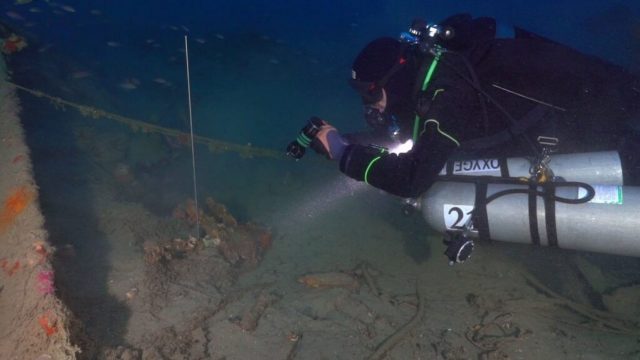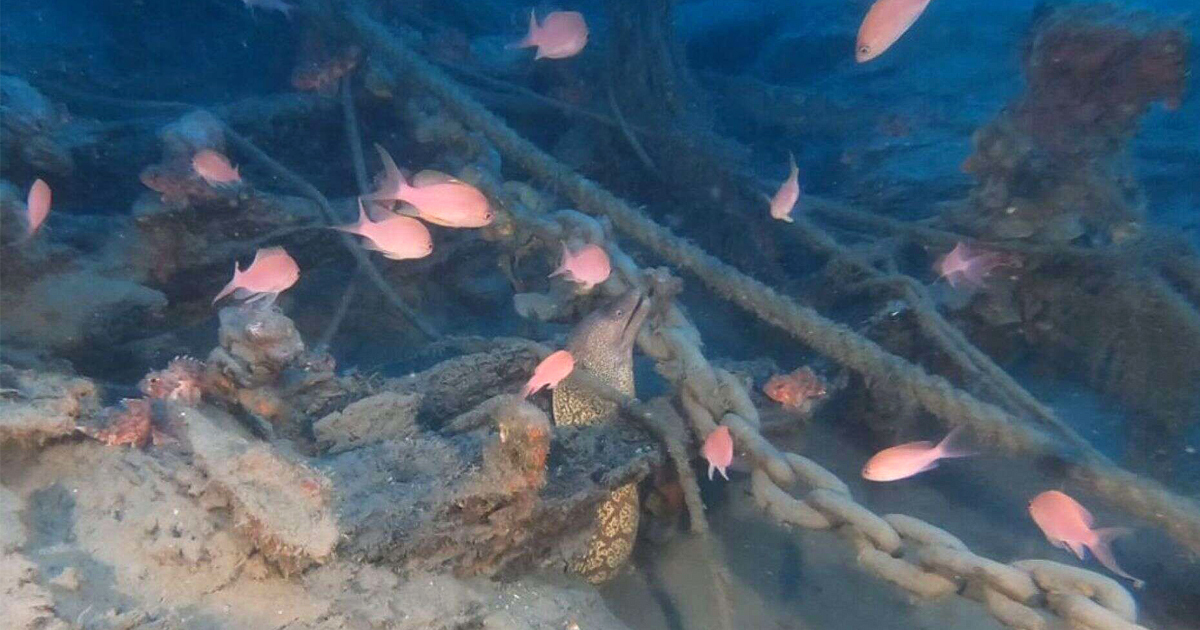A 16th century shipwreck has been found in Northern Italy. But is it a long lost galleon people have been searching for since the 1970s? Gabriele Succi and Edoardo Sbaraini of Rasta Divers were swimming off the village coast of Portofino when they encountered the sunken sight. It is believed that the 16th century shipwreck of the Santo Spirito & Santa Maria di Loreto, one of the biggest Italian merchant vessels of the 16th century, has finally been found.
Described by the Superintendency of Archaeology, Fine Arts & Landscape as being “in the abysses of Camogli” (a municipality), the pair glimpsed maritime remains at approx 50 m down. The statement says these were “a series of wooden elements arranged in a comb”. The hull was visible and “can be traced back to a wreck of the early modern age, of which very few examples are known today in the Mediterranean.”
So, a rare find. Could it be made even more special as the last resting place of the Santo Spirito and Santa Maria di Loreto? This large merchant ship set sail from Ragusa, a former maritime republic in what’s now Dubrovnik in Croatia, before reportedly sinking in late 1579 around the “Punta Chiappa sea mirror”. Punta Chiappa is a small hamlet of San Rocco.

The unfortunate galleon was caught in a storm and hit the rocks. But that wasn’t the end of the nightmare for its stricken sailors. “The local inhabitants pitched in to rescue the crew” writes website The Maritime Executive, “despite the risk of plague (an epidemic was under way in Genoa, her last port of call). Salvage efforts managed to recover a portion of her cargo, but much of it went down with the ship.”
Before the question of the wreck’s identity could be addressed, there was the small matter of red tape. Yes, bureaucracy exists even in the Mediterranean Sea! This was far from a case of finders keepers. Legal requirements meant Rasta Divers needed to tell the Superintendency first. A series of dives were then performed alongside the Underwater Carabinieri.
Photos and videos have been posted online, including by Camogli’s mayor Francisco Olivari. The wreck has actually been on authorities’ radar since February, with news only broken in the past few days. “Analysis of the ship’s timbers indicates that the vessel was built in the Netherlands around 1540, according to Holland’s National Office for Cultural Heritage” writes Fox News. “The wood used for the beams was felled in 1536, experts said.”
There’s no word yet on whether this is the real deal – more work needs to be done diving and exploring. Succi and Sbaraini have form when it comes to this Maritime Protected zone. The Superintendency mentions a previous dive exploring the Portofino promontory a couple of years back. They clearly know their air tanks from their elbows!
According to the Superintendency and reported by the website Divernet, “the divers expect to find ceramics, coins, navigational instruments, cannon and anchors”. They add the galleon provides “a rare opportunity to study in detail the naval architecture of the time.”
That architecture has proved surprisingly noticeable of late. The middle of 21st century Stockholm might not be the first place that springs to mind when it comes to 16th century seafarers. However, at the start of the year a shipwreck was spotted in that very place.
Related Article: Coal Miners in Serbia Discover Roman-era Shipwreck Buried in their Mine
“The vessel is believed to be the cargo ship Samson, which was commissioned by Duke Karl in 1598” says Fox. “The pine ship disappeared from archives in 1607” according to consultants Arkeologikonsult. Thought to have been moored and ditched, it apparently served as a rubbish dump for locals.
Santo Spirito and Santa Maria di Loreto suffered a more appropriate fate below the waves. Hopefully a glorious resurrection awaits this awesome slice of sea-going history. “If its identity is confirmed it would be the first discovery in Italian waters of a vessel from that period with hull timbers still intact” Divernet says.
